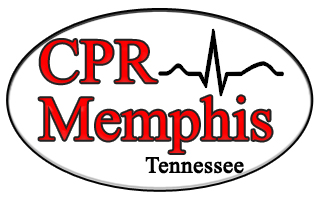Unknown Lab Report
Sophie Fisher
Microbiology
Introduction
It is quite important to be able to identify various microbes such as bacteria, fungi, and viruses. There are several reasons for this. The ability to study and research the cause, effects, transmission, and treatment of diseases caused by different microbes allows people to survive while living amongst these microbes. Many diseases affect human lives every day and some can be very harmful, so it is useful to understand how to identify a specific microbe that may be causing a disease. Using the methods introduced and explained in this microbiology course has allowed for a study performed in order for an unknown bacteria to be properly identified.
Materials and Methods
An unknown bacterial broth labeled as number 105 was given to the student by the course professor. The methods that have been learned thus far for identifying bacteria have been applied to this unknown. Procedures were followed as stated in the course laboratory manual by McDonald et. al (1), unless otherwise noted.
The initial procedure necessary was to use the quadrant streak method, as stated in the lab manual, to streak a sample of the broth onto a Nutrient Agar plate. This was done in an attempt to isolate the two bacteria separately before performing tests to identify them individually. After the plate was placed into the incubator, the growth of the bacteria was observed and recorded. Initially, the samples were not properly isolated, which led to several more attempts before a proper isolation was finally determined. Then, Gram staining test was performed for both fully isolated bacterial colonies. After close inspection under the microscope, one of the bacteria in unknown broth 105 was determined to be a Gram positive cocci while the other bacteria was determined to be a Gram negative rods. Because of this, several specific test were performed, as described in the lab manual, in order to determine the identity of the two bacteria.
The following tests were performed on the unknown Gram positive cocci:
- MSA (Mannitol Salt Agar)
- Urea
- Catalase
- Mannitol fermentation
The following tests were performed on the unknown Gram negative rods:
- EMB (Eosin-Methylene Blue) Agar
- Urea
- SIM (Hydrogen Sulfide, Indole)
- Simmon’s Citrate
- Glycerol fermentation
Results
Once the bacteria were properly isolated, the biochemical tests could be completed to determine the correct identity of each of the two bacteria in the broth. On the nutrient agar plate, the first bacterium’s morphology was observed as a medium-sized, light white/almost clear colored colony. After tests were performed to determine it as Gram+ cocci, the next test performed used a Mannitol Salt Agar (MSA) plate. This test determined the positive presence of a mannitol fermenter as observed by a change in color from red to yellow. The next test performed was a urea test, which produced a negative result for urease. After this a catalase test was done, showing a negative result. Since a negative result is not confirmation, the final test performed to determine the correct bacterium was a mannitol fermentation test. This test produced a yellow color, indicating a positive result for acid production. Due to this process of elimination, it was determined that the first bacterium was Enterococcus faecalis. This species was confirmed by the lab instructor. Table 1 lists all of the biochemical tests and their purposes along with the observations and results for the unknown Gram+ bacteria. A flow chart also shows the results indicating on how the identification was determined. All of these tests were performed as described in methods and procedures in the lab manual by McDonald et. al (1).
The second bacterium isolated on the nutrient agar plate exhibited a medium-sized, darker cream colored morphology. After tests were performed to determine it as Gram– rods, further tests were performed to narrow down which particular Gram– species this was. The first test done was on EMB (Eosin-Methylene Blue) Agar, resulting in a metallic green-colored growth which indicated a lactose fermenter. Following this, a urea test was performed which indicated that this species did not have urease to break down urea. Next, a SIM test was completed to test for the presence of sulfur or indole, showing the bacterium to be negative for both. The Simmon’s Citrate test results were negative, which contradicted the previous results of the SIM test. A glycerol fermentation test was done next to narrow it down further and due to the results of these tests, the second unknown bacterium was determined to be Pseudomonas aeruginosa. According to the lab instructor, however, this species was not correctly identified, and the correct species was Klebsiella pneumoniae. All of these tests were performed as described in methods and procedures in the lab manual by McDonald et. al (1). Table 2 lists all of the biochemical tests and their purposes along with the observations and results for the unknown Gram– bacteria. A flow chart also shows the results indicating on how the identification was determined.
Discussion and Conclusion
Once the unknown broth #105 bacteria were properly isolated, the Gram staining test was performed to determine which bacterium was Gram+ and which was Gram–. After the Gram+ bacterium was identified as such, the next test was done using a Mannitol Salt Agar (MSA) plate. This test determined the positive presence of a mannitol fermenter as observed by a change in color from red to yellow, which eliminated several bacteria from the list. The next test performed was a urea test, which produced a negative result for urease. After this a catalase test was done, showing a negative result. Since a negative result is not confirmation, the final test performed to determine the correct bacterium was a mannitol fermentation test. This test produced a yellow color, indicating a positive result for acid production. Due to this process of elimination, it was determined that the first bacterium was Enterococcus faecalis. This species was confirmed by the lab instructor. All of these tests were performed as described in methods and procedures in the lab manual by McDonald et. al (1).
After the Gram+ bacterium was identified as such, further tests were performed to narrow down which particular Gram– species this was. The first test done was on EMB (Eosin-Methylene Blue) Agar, resulting in a metallic green-colored growth which indicated a lactose fermenter, eliminating several species. Following this, a urea test was performed which indicated that this species did not have urease to break down urea. Next, a SIM test was completed to test for the presence of sulfur or indole, showing the bacterium to be negative for both. The Simmon’s Citrate test results were negative, which contradicted the previous results of the SIM test. Finally, a glycerol fermentation test was done to narrow down the list further. All of these tests were performed as described in methods and procedures in the lab manual by McDonald et. al (1). Due to the results of all of these tests, the second unknown bacterium was determined to be Pseudomonas aeruginosa. According to the lab instructor, however, this species was not correctly identified, and the correct species was Klebsiella pneumoniae.
There were some problems with the initial isolation of the two bacterial cultures from the unknown #105 broth. It took several attempts over the course of two weeks to properly isolate each bacterium in its own nutrient agar plate. Because of this, the student had a difficult time with organization and determining which tests would be appropriate to ultimately identify the bacteria. Additionally, while the Gram+ bacterium was correctly identified, the Gram– bacterium was not. This could have been caused by several factors, including improper testing procedure, possible contamination, incorrectly reading the results.
Pseudomonas aeruginosa is a coccobacillus-shaped, Gram-negative aerobic bacterium that is known as an opportunistic pathogen in humans, animals, and plants. This bacteria is commonly found in soil, water, and skin flora but can thrive in many natural and artificial environments. It can infect people with damaged tissues and reduce immunity, usually causing generalized inflammation and sepsis. Typically, P. aeruginosa infects the urinary tract, pulmonary tract, and skin wounds. If an infection of this species grows in critical body organs, it can be fatal. This species of bacteria is naturally resistant to a large range of antibiotics, but antibiotics that have an effect include aminoglycosides, cephalosporins, and carbapenems. The most effective treatment of Pseudomonas aeruginosa is phage therapy, which can be used with antibiotics (2).
References
1. McDonald, Virginia, Mary Thoele, Bill Salsgiver, and Susie Gero. Lab Manual for General Microbiology. (April 2011). St. Louis Community College at Meramec.
2. “Pseudomonas aeruginosa.”. N.p. Web. 29 Apr 2013.





